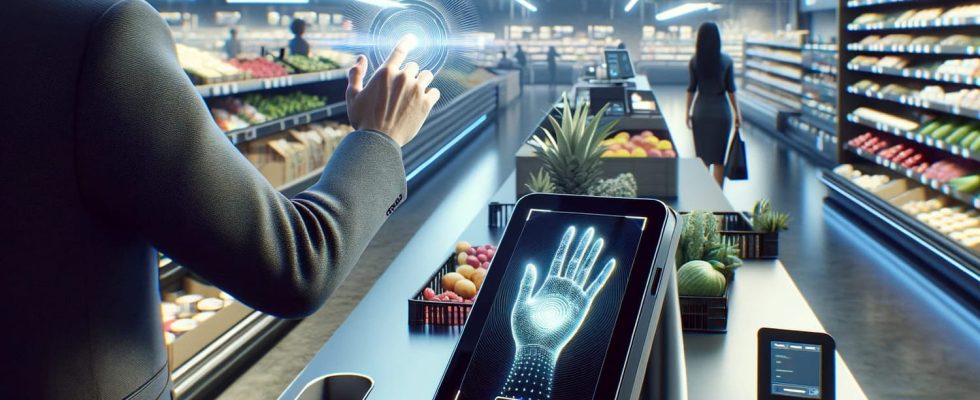A bank card is no longer required to pay for purchases. Some use their smartphone, an application or a connected watch… But it will soon be possible to pay in other ways. In the United States, this new way of shopping is in place in many stores.
The way of shopping continues to evolve, along with technical progress. Supermarket checkouts have gradually transformed into a “self-service” format, and it is possible to pay for purchases using a smartphone or a connected watch, linked to an application. If some French people have already put aside the use of their bank card, they should soon be able to test this new way of paying at the checkout. This means of payment, which until now still seemed futuristic to us, is no longer science fiction, since a company based in Suresnes, in Hauts-de-Seine (the company Ingenico, world leader in payment terminals payment) has developed an innovative process in 2023. A technology that allows you to pay for your purchases with the palm of your hand. But how does it work ?
To operate, the consumer must first associate their palm with their bank card. “He places his hand on a device which scans it, enters his email or telephone number then presents his card. The information is then associated, encrypted and sent to a secure cloud“, Michel Léger, chief technology officer at Ingenico, explained to the newspaper Le Parisien, during the presentation of the device last September. You then simply pass your hand in front of a reader connected to the merchant’s payment terminal to be able to pay the amount due.
This new way of paying for your shopping has the advantage of saving time: no more searching for your card at the bottom of your bag or wallet, there is less fear of theft or loss of bank card and of course, there is no need to enter your code. It is also very secure since 5 million points are mapped, with “infrared light which distinguishes the hemoglobin contained in the veins as well as the blood flow”, explains the developer.
Although this palm biometrics technique has not yet been launched in France, it is already applied in Amazon stores in the United States, and more recently in all Whole Foods stores, as well as in a Hudson Nonstop store. There, young adults who wish to buy alcohol, for example, no longer need to present their identity document. The French company hopes to move things forward in certain sectors such as mass distribution, catering or even festivals and stadiums, which require speed of transaction due to crowds.
